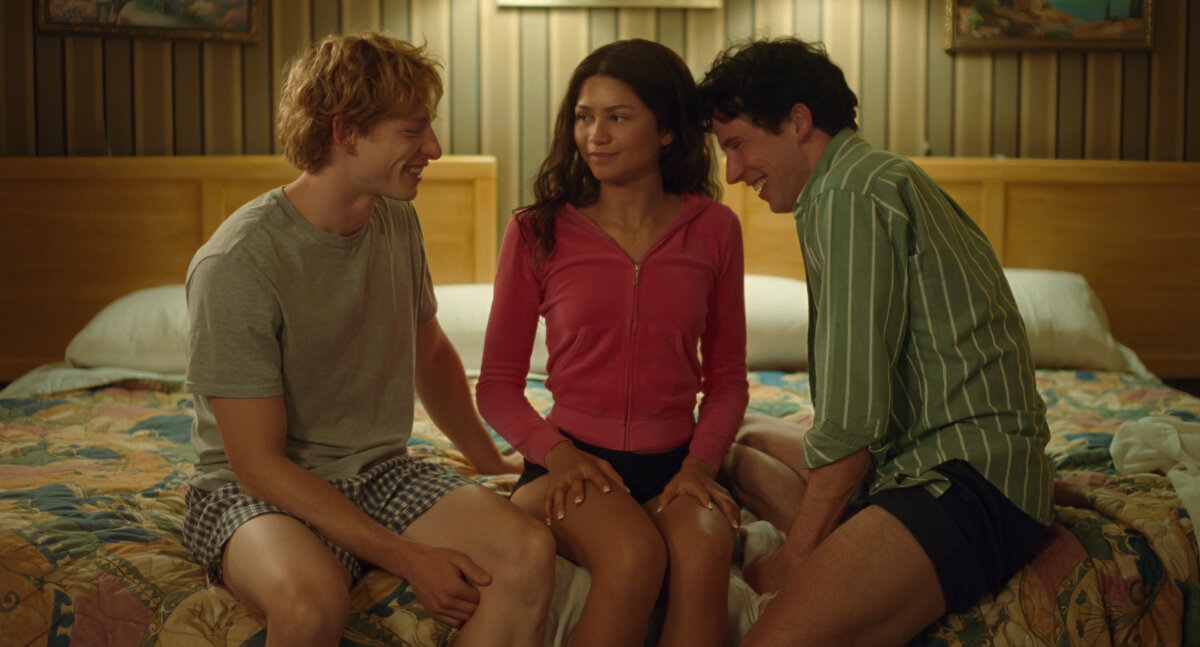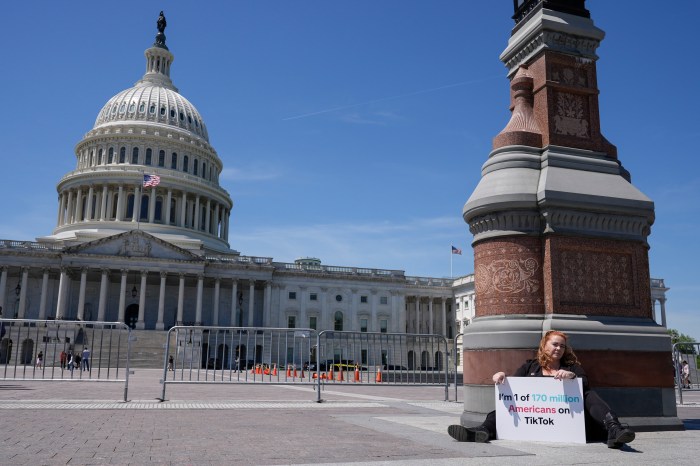There have been many heroes chronicled in the pages of comic books and graphic novels, and Rep. John Lewis might be one of the most important ones.
The congressman from Georgia — who has held his seat since 1987 — is a key figure in the civil rights movement, a former chairman of the Student Nonviolent Coordinating Committee, one of the leading organizers of the 1963 March on Washington and a leader of the marches from Selma to Montgomery. Even this year he was critical in a sit-in on the House floor calling for a vote on a gun-control bill.
Lewis’ experience in the civil rights movement has been captured in “March,” a trilogy of graphic novels co-written with Andrew Aydin and artist Nate Powell. The critically acclaimed series comes to a close this week with the release of “March: Book Three.”
amNewYork chatted with Aydin and Powell about the book.
Looking back at the finished trilogy, what do you see as its significance?
Nate Powell: Growing up as a Generation X southerner with Mississippi Baby Boomer parents, I took for granted that a basic, working knowledge of the civil rights movement was a given in most kids’ learning about the world around them. Thanks to “March,” I now see the degree to which history really is a living thing, and the speed with which our shared history and continuity fades from our collective consciousness. Our trilogy is playing a real role in this urgently-needed social conversation, and I welcome any means by which this history may remain alive.
Andrew Aydin: “March” is changing how young people learn about the civil rights movement, and opening the eyes of people who thought they knew the whole story. I grew up in Atlanta. Congressman Lewis has been my congressman since I was 3. But SNCC, the degree of importance young people played in the movement, was never something talked about much. With all the people reading “March,” and all the schools using “March,” we’re changing that.
I think we have also changed people’s perception of exactly how valuable comics and graphic novels can be as literature and as high art. For so long comics were looked down on, denigrated, even used as scapegoats for juvenile delinquency by Congress, but there’s no place for that now. We buried those notions. Instead, the great cartoonists of this generation, like Nate Powell, have a wider playing field than ever to express their gifts and tell stories in a way we all need to see them.
Do you see lessons from the book that could be applied to the current political season?
NP: “Book Three” has an uncanny level of content precisely echoing 2016, from the political wafflings of the 1964 party conventions and their respective fallouts to the consequences of local and state power structures turning blind eyes to the beatings, unjust imprisonment and murders of their own citizens. Its content was something we didn’t need to spin or guide in any way — these parallels just kept revealing themselves, and it was our duty to make it plain for all to see. Most importantly, however, is the third book’s emphasis on illuminating disagreement and divergent perspectives. By 1964, the movement was working through its own generational, philosophical and political differences, but the vast majority of people in the movement remained dedicated to common goals despite those differences.
AA: I hope “Book Three” is a guide for today’s activists. It took raw courage for young people to volunteer to go to Mississippi in the summer of 1964, and unrelenting faith in the power of democracy to organize such a massive campaign. In some ways that faith was not rewarded, but their work has echoed now for more than half a century. The parts of the movement we recognize so well now were not born from a single decision, but a complicated and messy evolution of ideas and spirits, coming together after a long, hard struggle to triumph in moments when the odds seemed the longest.
What have you personally learned from working with Rep. Lewis?
NP: My most impactful lessons and challenges have largely been personal. I struggle with a part of myself that can be very dismissive and judgmental, made worse by the fact that most of my patience reserves are expended on my young children, but Congressman Lewis is the real deal. His temperament, kindness and perspective have been essential, inspiring and transformative.
AA: It’s hard to know where to start. I first began working for him a decade ago, helping to answer his mail. I’m a long way from there, and his influence over my life has been immense. He taught me how to see the world. Not a world of facts or anecdotes, but a world of human beings whose love, and needs, and wants and desires are all connected. He’s taught me that failure is OK, but giving up is not. He’s taught me to take risks for what I believe in, and he’s shown me how far that can get you.
Have you heard any particularly inspiring stories from people who had read the books?
NP: On a personal note, “Book Two” hit my parents pretty hard. Though for decades we’ve been able to have substantial conversations about their lives as white, middle-class kids growing up through the end of the Jim Crow South, “March” provided a push for my folks to unearth some of their own memories and baggage regarding complicity toward that regime. Only in reckoning with our own relationships to oppression and inequality may we each begin to see how to truly begin healing those societal wounds.
AA: Just before “March: Book One” was released, I got a phone call from a reporter who had gotten an advance copy. He said something like, “I read the book, and I loved it, so I decided to give it to my 9-year-old son. Well, he read it and now he’s gone and put on his Sunday suit, and he’s marching around my house demanding equality for everyone.”
The Civil Rights Movement remains such an important and relevant issue. From your work with Rep. Lewis, does he seem hopeful for the future of it? Are you hopeful yourself?
NP: While we see a less bleak future as something dearly worth fighting for — as does nearly everyone I know — Congressman Lewis offers a particularly bold antidote for the cynicism, the partisan echo chambers, and the resignation we must all resist. His personal quest for dignity and equality is largely a moral mandate, as opposed to a strategic or political one, and within that his vision is clear and unwavering. Though he consistently states, “We’ve all got quite a distance to go,” it’s deeply affecting to learn his story and then hear him say, “For those of you who say nothing has changed, come walk in my shoes.”
AA: I’m hopeful, and I know Congressman Lewis is hopeful as well. He’s been through so much, endured through so much tragedy, but he’s always found “a way out of no way.”
Do you have a favorite or personally meaningful experience or moment from working on the trilogy?
NP: The most meaningful is getting to experience my four-year-old daughter grow into the world, and her own sense of self, surrounded by this work. We draw together in the studio all the time, and every few months she asks to read “March: Book One” as her bedtime book. It’s been profound to watch a young person’s expanding ability to grasp issues of fairness and inequality, of awareness to difference and otherness. As her world has gradually gotten bigger, we’ve recently been able to talk about discrimination, and about generational differences going back to her grandparents, in a real and concrete way. It gives me hope for the world she and her sister will inherit.
AA: Nothing surprised me more, and meant more to me, than seeing an entire class of ninth graders mob Congressman Lewis at the Miami Book Festival. We hadn’t spoken yet. We were just walking through the festival when first one student, then another, and another, and another, all came up to the congressman asking for a picture, or an autograph. Several of the students had copies of March, and we came to find out that they were all reading it in class. To those kids, Congressman Lewis was as important as any actor, or athlete, or musician — as he should be. Now, that happens a lot, but that first time was a long time coming.
During the course of the three graphic novels, how have you seen your skills as a comic creator evolve?
NP: This was, in many ways, like getting paid to go to grad school, as well as being sent to Cartoonist Boot Camp all over again. As the demands of the book — its content and context — changed in real time to meet with and confront the world around us, my technical skills and methods found an entirely new shorthand. For over a year and a half, I needed to draw two complete pages every day, and over that process, I developed both a consistency for which I’m very grateful, and an eye for fishing out any sequence which would provide room for me to explore unscripted content: intuitive, emotional, and environmental visual content.
AA: “March: Book One” was the first graphic novel or book I ever participated in writing so it was an enormous learning curve. Nate Powell is such a gifted and talented cartoonist that I had to do everything I could to keep up. It feels like a lifetime ago, now. There was so much pressure and no other option than to just dive in and do the best I could. With each successive volume, I feel like I got much better at the craft of writing, and learned to take full advantage of Nate’s talents as an artist. With “March: Book Three,” I think we did our best work, bringing our largest and most complex volume to the page in the best possible way.
If you go
Rep. John Lewis, Andrew Aydin and Nate Powell will be discussing their graphic novel “March: Book Three” Aug. 3 at 6 p.m. at B&N Tribeca, 97 Warren St., 212-587-5389, FREE

















